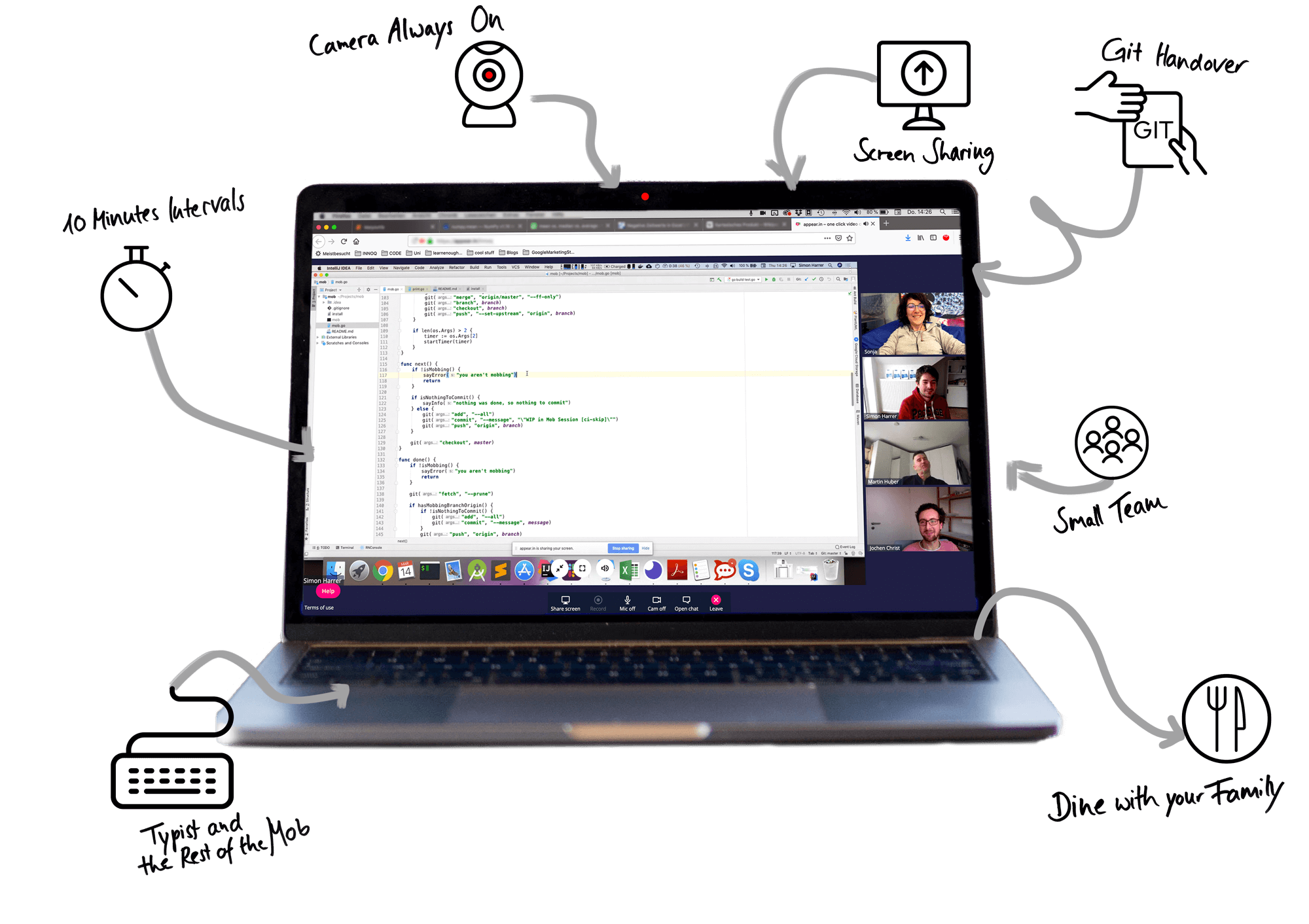Dieser Blogpost ist auch auf Deutsch verfügbar
Our colleagues Jochen Christ, Simon Harrer, and Martin Huber have been working together in a team for a customer project for a while now.
The problem: they don’t live in the same place and the customer is somewhere else. Commuting? A weekday life in a hotel? It’s difficult in the long run, because they don’t just want to see their families on weekends or lose valuable time every day on their way to the office. But they also want to work closely with their team colleagues, and develop software together as a team.
The solution: Remote Mob Programming. As with Mob Programming, you work alternately one after the other in a team, just not in one room with one keyboard, but each in the home office, via screen sharing and webcam.
In order for this to work, they have highlighted 15 points that work so well for them that they no longer want to work differently:

- Remote Everybody
- Camera Always On
- Regular On-Site Meetings
- Small Team
- Same Time
- Typist and the Rest of the Mob
- Screen Sharing
- 10 Minute Intervals
- Git Handover
- Group Decisions
- Constant Momentum
- Learn from the Team
- Trust
- Save the Planet
- Dine with your Family
The concept promises more focused, efficient and ultimately satisfied work, as it combines the advantages of teamwork on site and home office.
What’s the catch? If the conditions are right, there is none. But they have to be there:
- A small team (3–4 people) that likes to work together.
- An agreement on the same working hours.
- Stable infrastructure.
- Confidence of the customer.
If you want to get started right away, you can find all the information on the how and why plus tool recommendations at remotemobprogramming.org.
Feedback and all your questions are welcome on Twitter.
